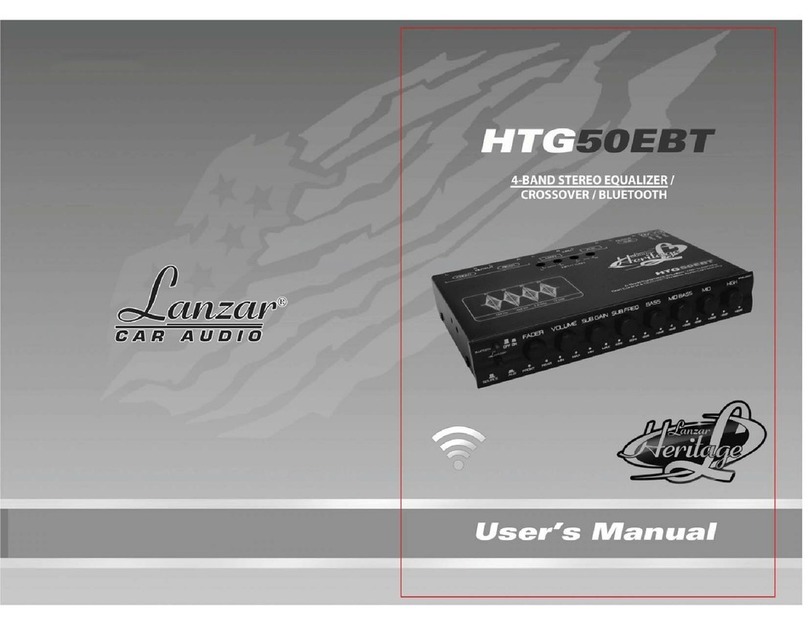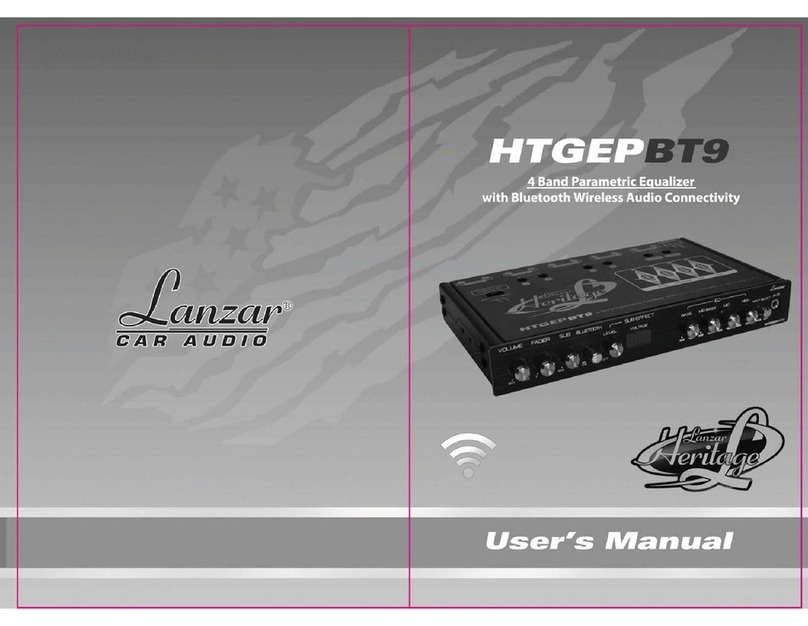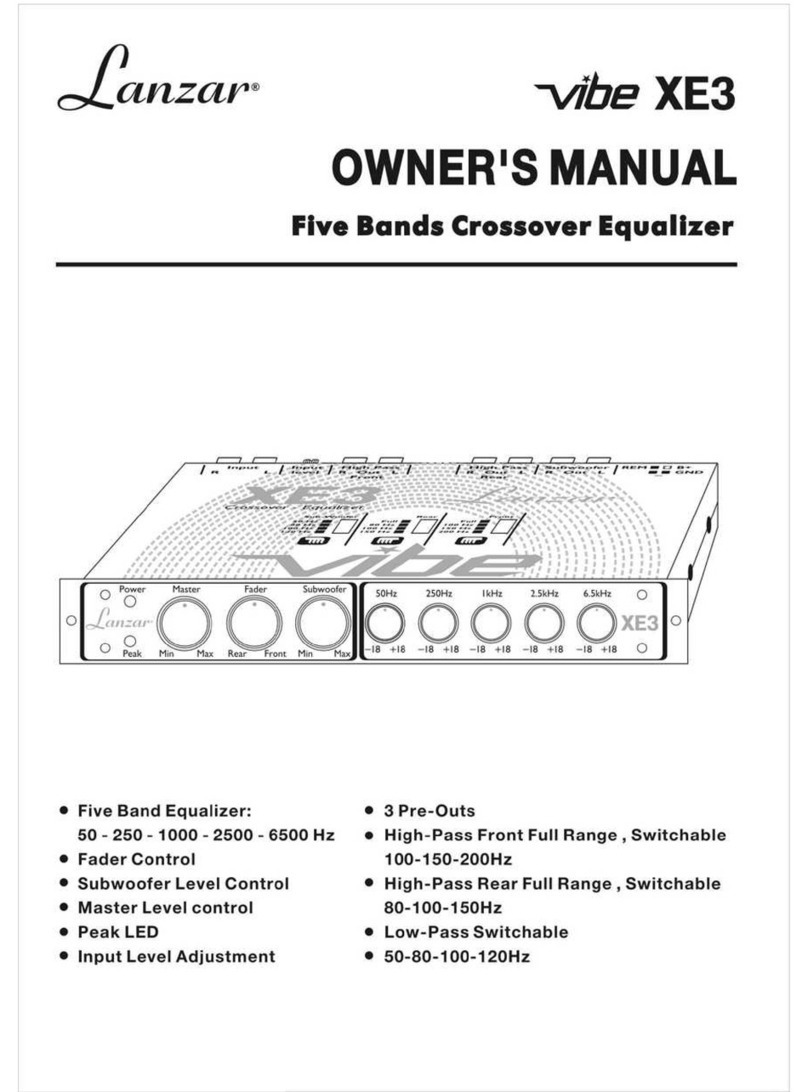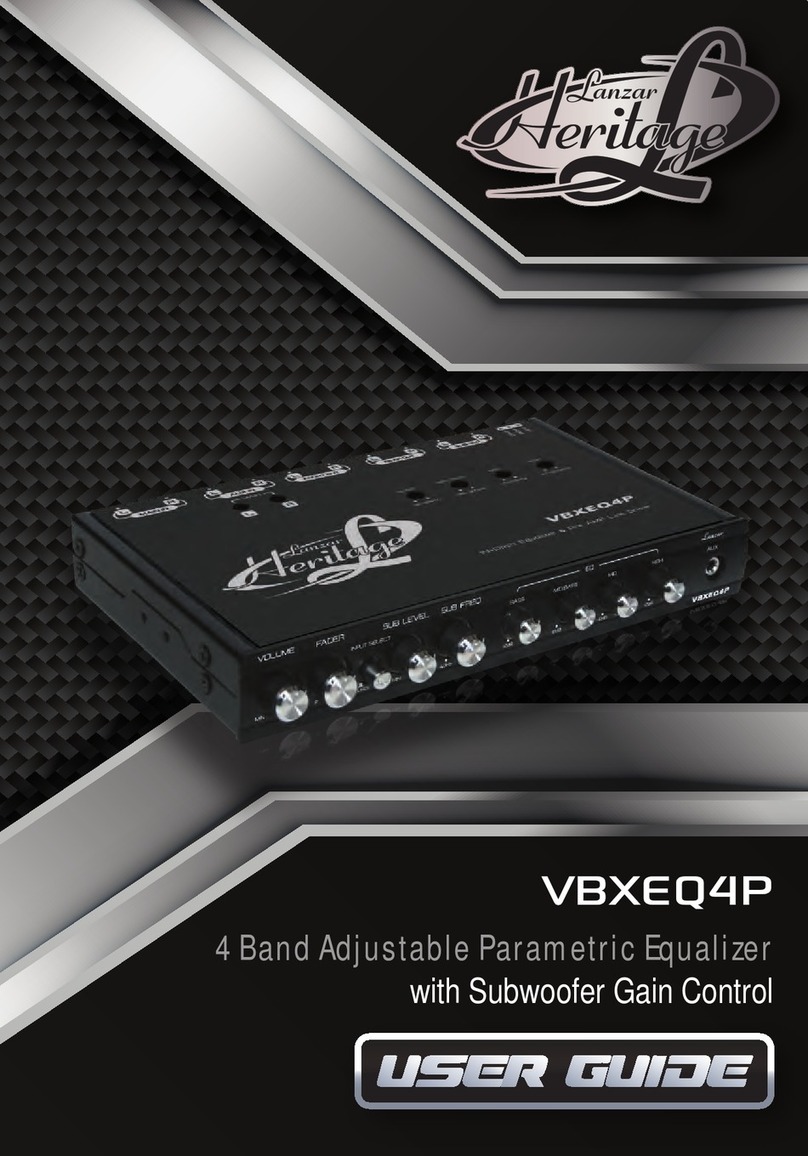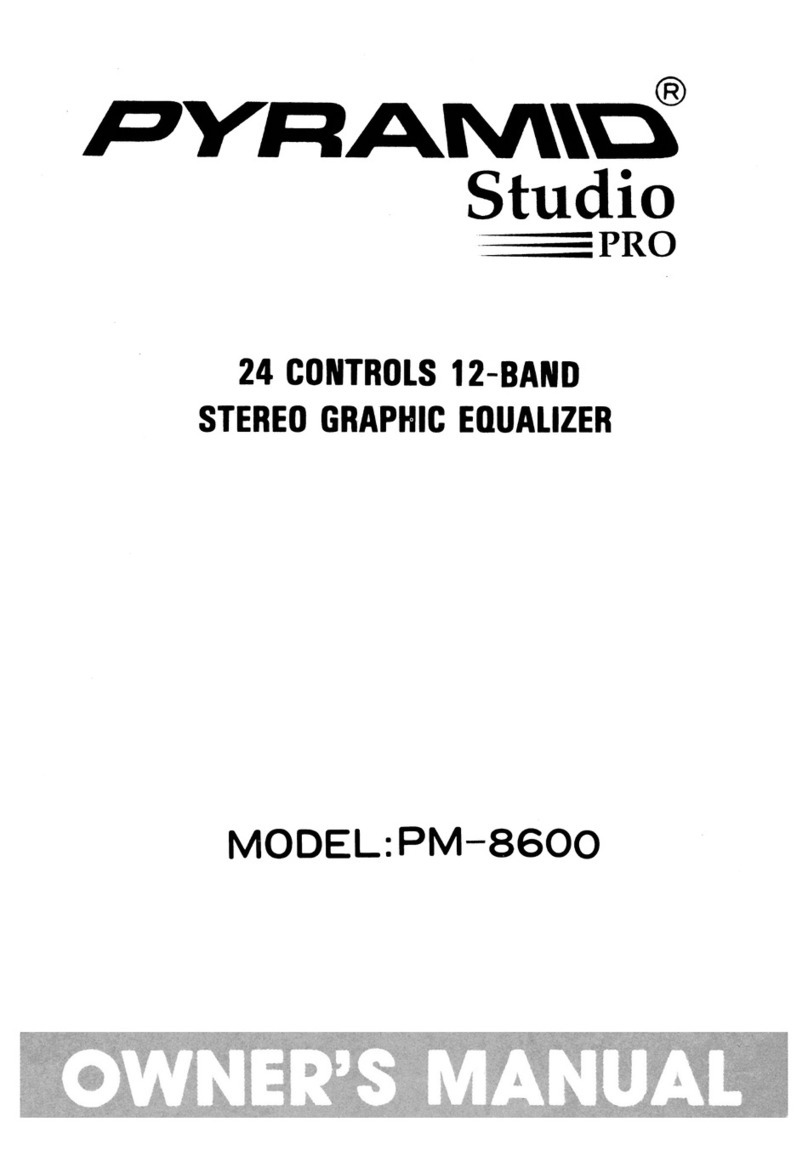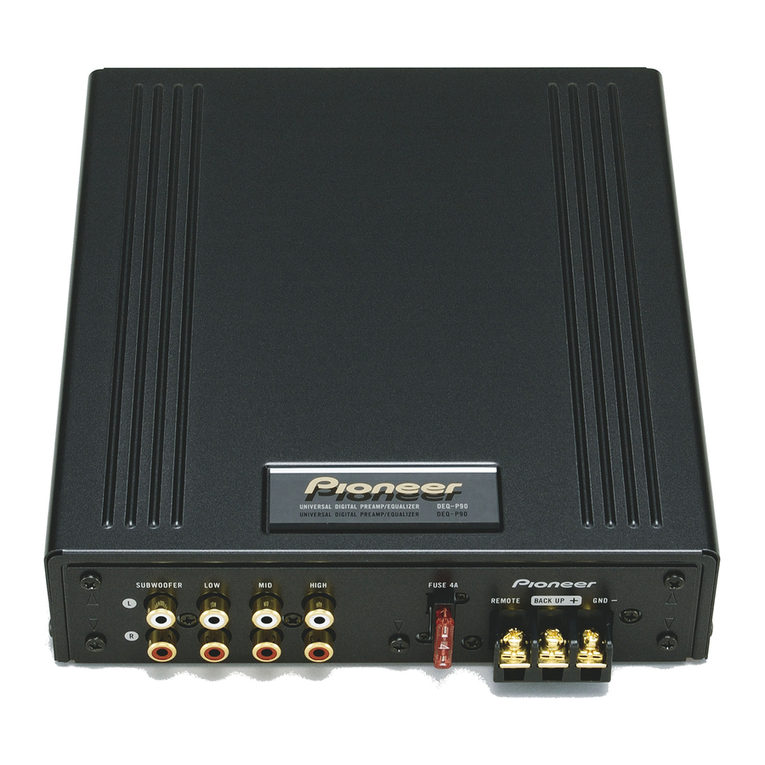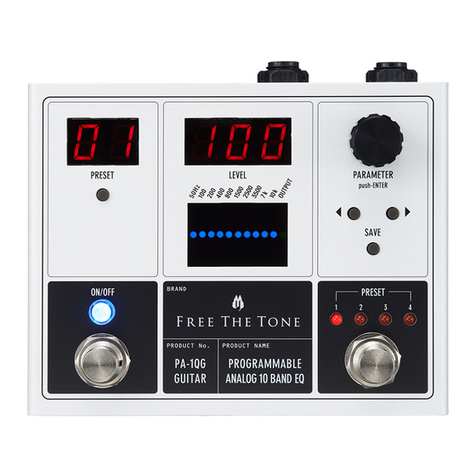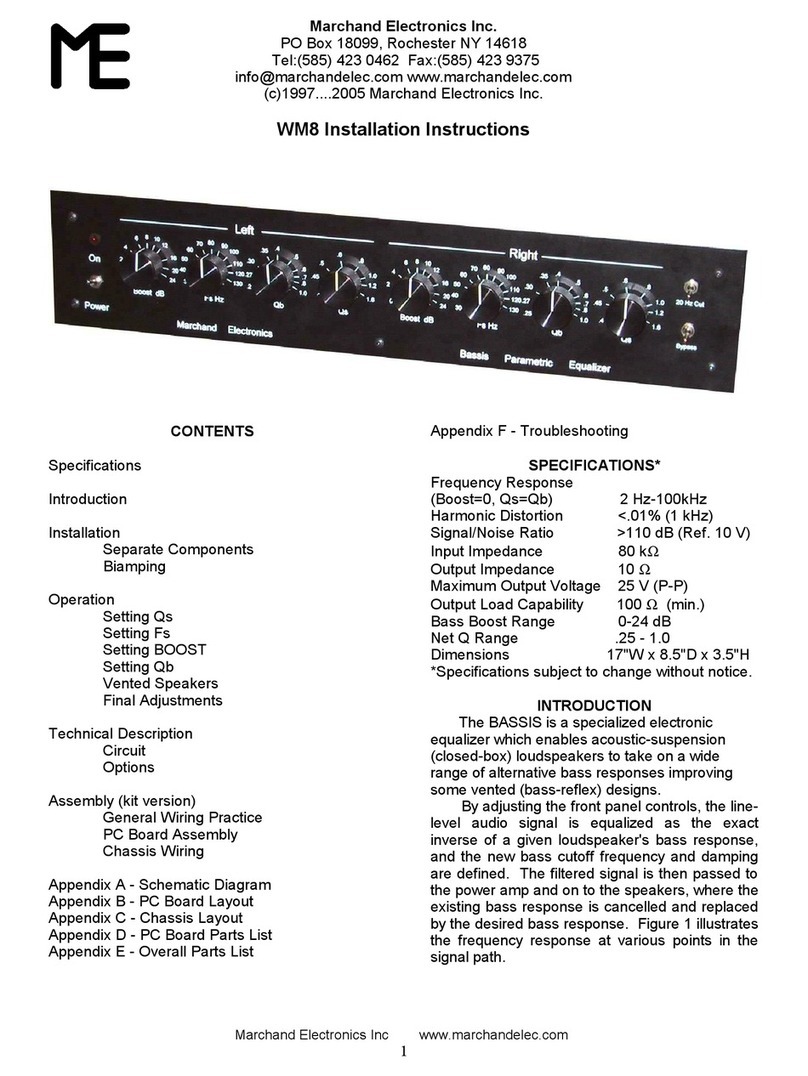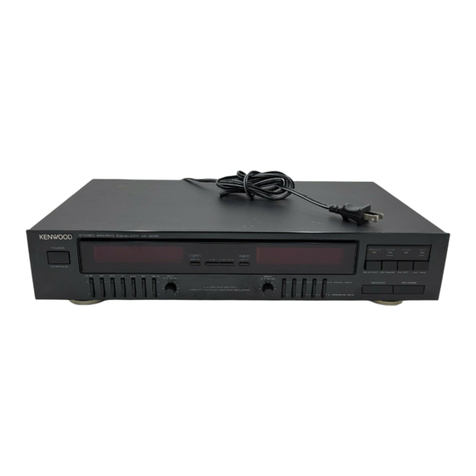5
eatures and speci ications
Control Frequencies
Half Octave
Full Octave
Control Range
Frequency Response
Signal-to-Noise Ratio (A-Wtd)
Input Sensitivity
Maximum Output Voltage
Channel Separation
Power Requirement
Dimensions, WxDxH, inches
(millimeters)
20Hz • 30Hz • 45Hz • 67Hz
100Hz • 150Hz • 200Hz
350Hz • 500Hz • 800Hz
1.1KHz • 2.2KHz
4.4KHz • 8.8KHz • 17.2KHz
12dB Boost/Cut
10Hz - 30KHz
100dB
80mv-2.0Volts
for 400mv Output
7.0 Volts
65 dB
11-16 Volts DC
negative ground
11-5/8 x 8-9/32 x 1-1/2
(295 x 210 x 38
. Fader Control
2. Right and Left Channel Equalizer
Controls
3. Right and Left Output Level Controls
4. EQ In/Out Switch
5. Line Inputs
6. Front & Rear Outputs
7. Line Outputs
8. Power Indicator
This rotary controls the balance between the front and rear outputs. This fader takes priority
over the fader in your car stereo head unit.
The 15 band equalizer controls divide the frequency control range into 1/2 octave steps at
20Hz, 30Hz, 45Hz, 67Hz, 100Hz, 150Hz, 200Hz, 350Hz, 500Hz,800Hz,and at full octave
steps, 1100Hz, 2200Hz, 4400Hz, 8800Hz, 17200Hz. Each rotary control permits the signal
at that control’s frequency to be either increased (by turning clockwise or decreased (by
turning counter-clockwise by up to 12 dB. When set to the center detent position, the
control provides no increase or decrease at that frequency.
There are separate level controls on the E-15 for both the left and right channel outputs.
When installing and first setting up the system, set the output level controls to the center
detent position for a starting point.
Typically, when the head unit volume is set to approximately the 2 o’clock position your
system is at its ideal volume. Set the head unit volume this way, and then adjust the outputs
on the E-15 accordingly to achieve the ideal volume without over-driving the inputs of your
amplifier, which will create distortion.
The goal in the adjustment is to obtain the best signal-to-noise ratio while obtaining your
desired listening volume.
This switch controls whether or not the E-15 is providing equalization (”IN” or simply
passing signals through in an unaffected way.
The line inputs are connected to your head units RCA outputs. If your head unit has a fader
that fades between two sets of RCA outputs make sure that the head unit fader is turned
toward the set of RCA connectors that you are using. If your radio has only speaker level
outputs you can connect the E-15 to your head unit via a high/low level adapter (for example,
a Pyramid NS-60 or equivalent . This separate component allows you to connect your
speaker wires from your head unit and the RCA cables from the E-15 while balancing the
head unit’s output and the equalizer’s input.
Connect these outputs to the appropriate inputs of your power amplifier(s . The front outputs
connect to the amplifier driving your front speakers, the rear outputs for the rear amplifier.
Connect this output to another signal processor type device in your system, such as a
crossover. Th1s line output level is unaffected by the fader control.
This indicator lights up when the internal power supply is activated and the unit is operational.
Lanzar strives to continually improve and refine its products, as well as to design
new models. Therefore, the product specifications and illustrations in this manual
are subject to change without notice.


